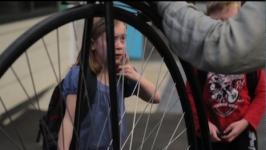Nature of technology
We are preparing to close this site soon as this content has now moved to Tāhūrangi.
Tāhūrangi is the new online curriculum hub for Te Tāhuhu o te Mātauranga | Ministry of Education.
The nature of technology strand guides teachers to develop learning activities that support students to question why the world around them is the way it is. They develop perspectives and become aware of the relationship between people as users and designers/creators of technology and how that technology in turn impacts on more people, the environment, and on culture.
Students develop an understanding of technology as a discipline and of how it differs from other disciplines. They learn to critique the impact of technology on societies and the environment and to explore how developments and outcomes are valued by different peoples in different times. As they do so, they come to appreciate the socially embedded nature of technology and become increasingly able to engage with current and historical issues and to explore future scenarios.
Students have opportunities to increase their understanding of the complex moral and ethical aspects that surround technology and technological developments. They ask big questions such as “if it can be done, should it be done?” They have opportunities to examine how previous technological outcomes were designed and produced, the impact of that design intervention on people, the environment and culture. This then guides teachers to develop learning activities that support students to make informed predictions from an ethical and moral position of future technological design decisions.
 Components within the nature of technology strand
Components within the nature of technology strand

The nature of technology strand is comprised of two components. Support students to make links between the components.
The pages below provide further detail, key ideas, examples, and related resources for each component.
Characteristics of technology
Students explore the human activity of “intervening by design”, the essence and intent of technology education.
Students understand technology is a unique form of human activity; they ponder how technology alters actions and thinking without people's awareness that this is happening. They also think about what people do in response to a desire, need, or opportunity.
The key is understanding that this human activity intends to be purposeful and productive – to improve and do good – to extend human sensory perception and physical ability. In this way, human design, creative, and critical thinking activities serve as a means of extending the “natural” functioning of the human body. For example, microscopes and telescopes render the extension of our sense of sight. Horse-driven wagons, cars, planes, and spacecraft permit the extension of our ability to transport ourselves.
Characteristics of technological outcomes
Students learn:
- how outcomes are products and/or systems
- that outcomes are designed for a purpose
- that outcomes have both physical and functional natures (how they look and what they do).
Students analyse current and past outcomes so that they can:
- learn from the design decisions made and their impacts on the outcome
- learn about intended and unintended functions and uses
- understand concepts of malfunction and failure.
For achievement objectives, teacher guidance, and strategies for engaging students, visit the indicators of progression (IOPs).
